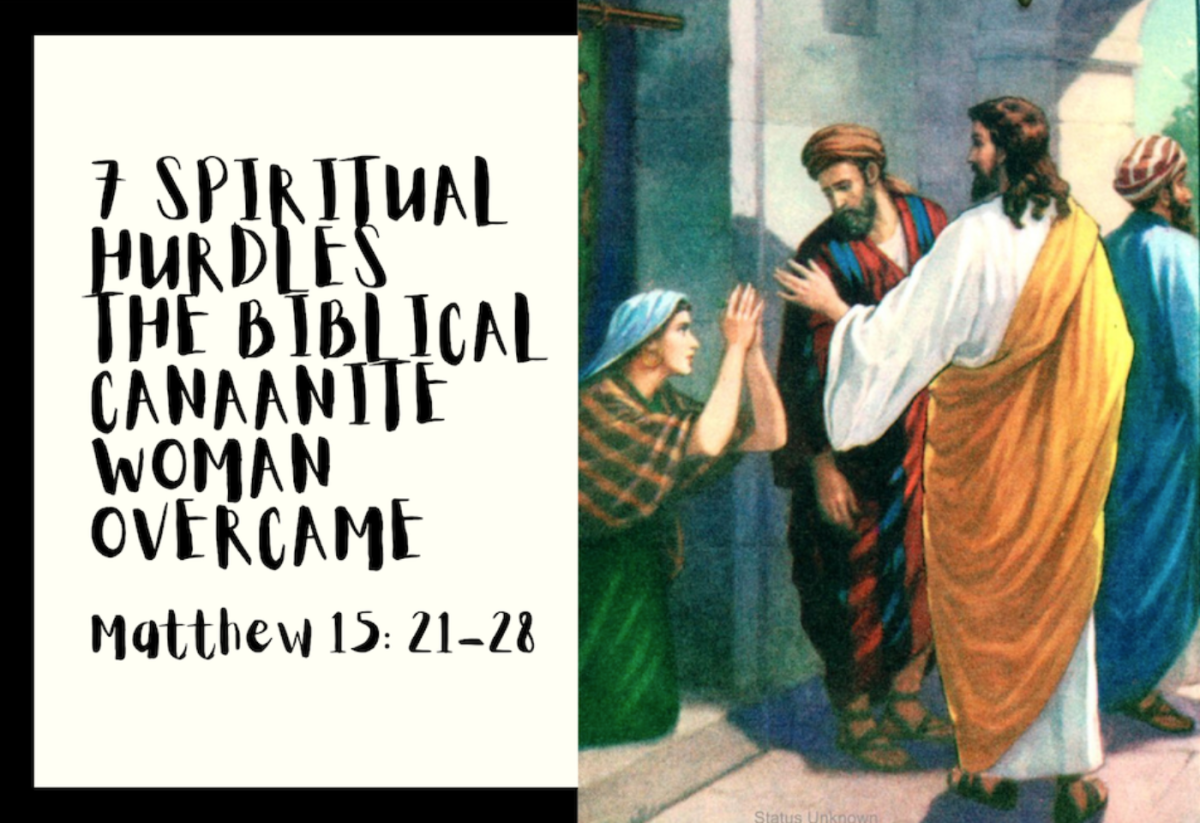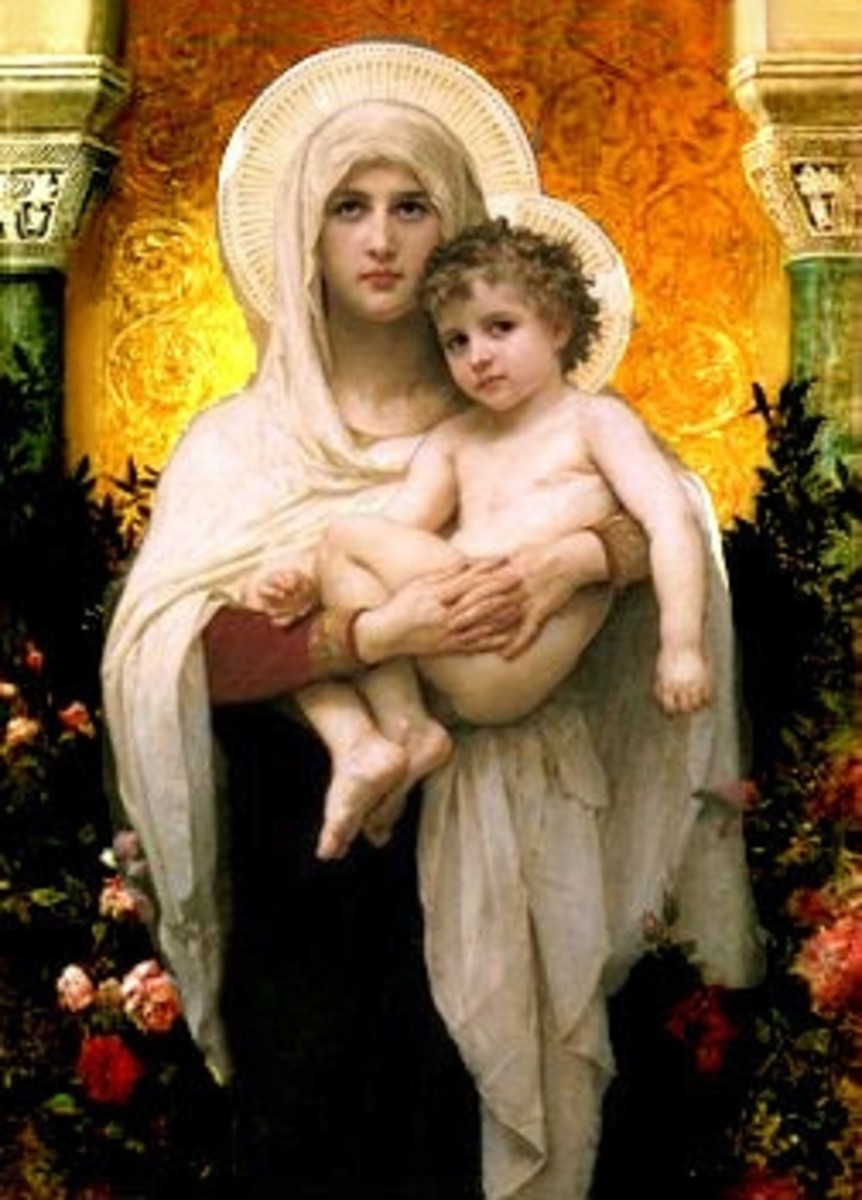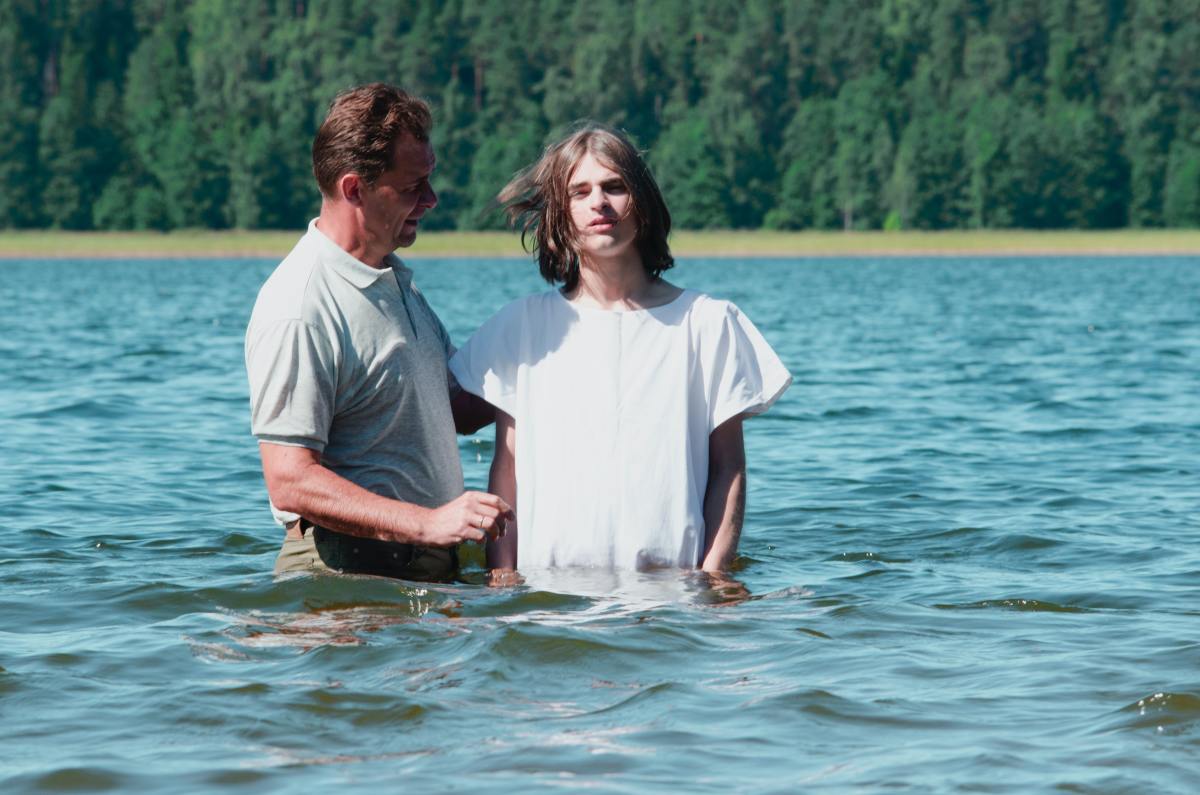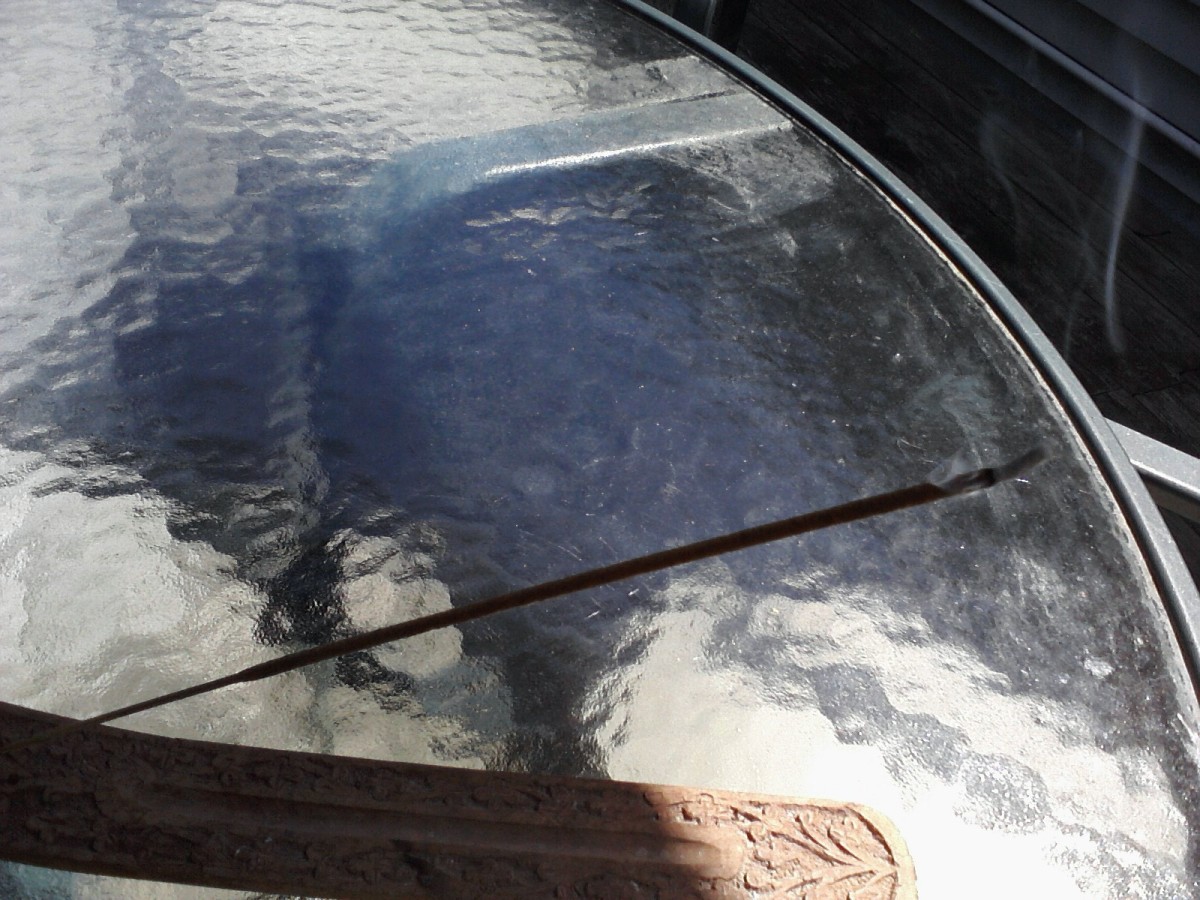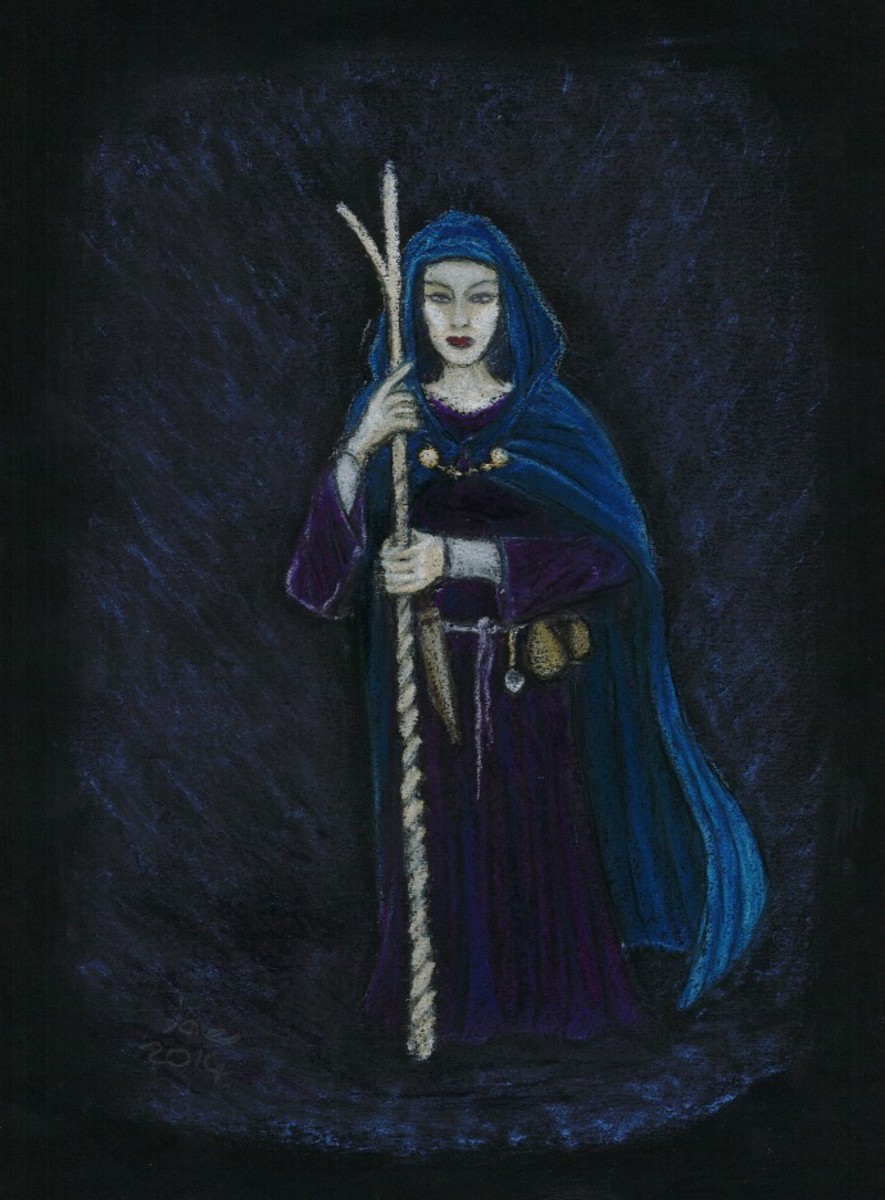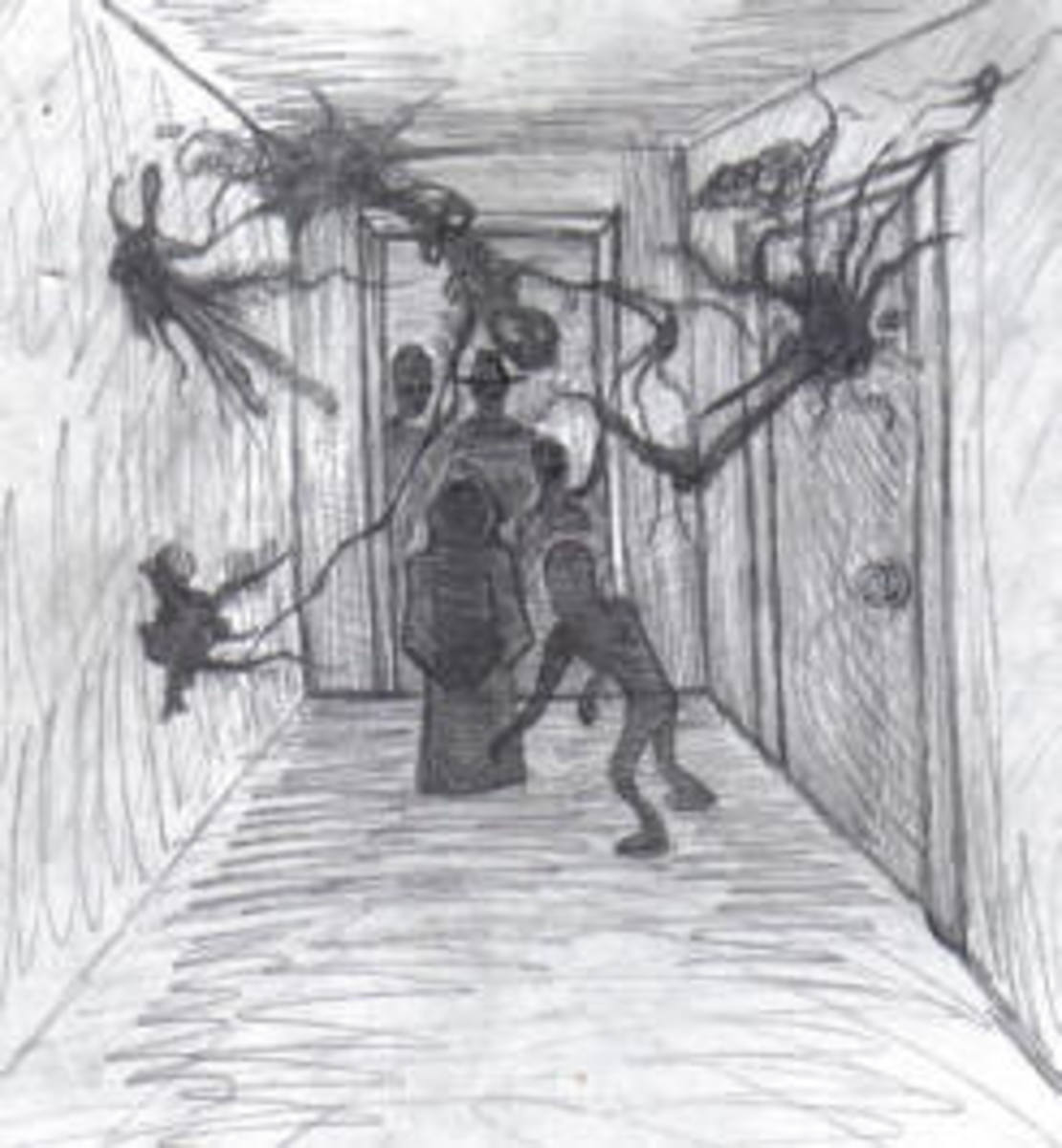Devotion to the Blessed Mother
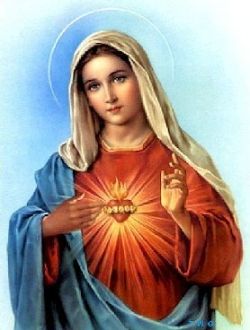
Mary - the Mother of God!
I know that not everyone will agree with the information that I present on this page, but, as a Catholic, I wanted to clear up some of the misunderstanding and misconceptions regarding the Catholic Church's relationship with The Blessed Virgin Mary.
Catholics do not worship Mary. Instead, they honor Mary and give devotion to her. After all, she is the mother of God. The Catholic Church teaches that Mary was conceived without sin. God created Mary to be the mother of His only Son. Mary humbly accepted to be the handmade of the Lord. She carried and gave birth to Jesus Christ for the sake of all people.
Jesus suffered and died on the cross so that we may have eternal salvation. In dying, He also gave to us - His mother.
John 19:26-27 reads, "When Jesus saw his mother and the disciple there whom he loved, he said to his mother, 'Woman, behold, your son.' Then he said to the disciple, 'Behold, your mother.' And from that hour the disciple took her into his home". Jesus was speaking to his disciple John.
Therefore, Catholics accept Mary as their mother - the mother of all.
Following the death and resurrection of Jesus, the Bible tells of the disciples praying together with Mary.
This is found in Acts 1:13-14:
"...and when they had entered, they went up to the upper room, where they were staying, Peter and John and James and Andrew, Philip and Thomas, Bartholomew and Matthew, James the son of Alphaeus and Simon the Zealot and Judas the son of James. All these with one accord devoted themselves to prayer, together with the women and Mary the mother of Jesus, and with his brothers."
ABOVE PHOTO:
By Unknown, uploaded by en:User:Jtdirl (Used in many books and churches.) [Public domain], via Wikimedia Commons
Honoring Mary Proclaims the Greatness of God - "Honor Thy Father and Thy Mother"
Just as people honor their mothers, Catholics honor Mary, the Mother of God.
People often host banquets and ceremonies to honor certain individuals. They erect statues and monuments in order to show respect and honor for certain people.
Why then, do other religious denominations condemn the Catholic tradition of honoring the Lord's Mother? By honoring and paying respect to the Mother of our Lord, we are proclaiming the glory and greatness of God. Mary was favored by God. We too, then, should favor her and her humble acceptance of God's will for her.
And what was God's will for Mary? To give birth and life to Jesus Christ - our Lord and Savior.
I picked a few links that might help explain why Catholics honor The Blessed Mother.
- Catholic Doors
Answers to the questions: - Why do Catholics pray to Mary? - Is there any Biblical support for the belief of Catholics to call upon Mary to intercede on their behalf? - ***The Catholic Bible 101***
"The Blessed Virgin Mary is the one woman in the entire Bible who makes the claim, "All generations to come shall call me blessed" (Luke 1:48). And why is that? Well, Catholics believe it is because she was preserved from all time from sin by a speci - The American Catholic
"God the Father provides that very consolation to the humanity of his dying Son. Being able to cry out to his mother may have made the torture of Christ's death easier to bear. Mary's presence at the cross gave Jesus even greater courage to embrace h - About the Catholic Faith
"There are some that say that the Bible really says very little about Mary. However, that is quite contrary to the truth. There are actually a lot of references to Our Lady." (excerpt from article) - Understanding the Catholic Devotion to Mary
"In all the great mystery of Mary, then, one thing remains most clear: that of herself she is nothing, and that God has for our sakes delighted to manifest His glory and His love in her." (excerpt from article) - Feast of the Annunciation
"A True Mother, Mary considers none of her glories her own. After all, she points out, she is only doing God's bidding: "Behold, I am the handmaid of the Lord; it be to me according to your word" (Lk 1:38). Even when she recognizes her superior gifts
Photo: By millicent_bystander on Flickr
Licenced under Creative Commons 2.0 Generic
Evidence that the earliest Christians honored Mary can be traced back to the Roman catacombs.
By definition, a catacomb is an underground cemetery constructed by the ancient Romans. It is made up of many recesses or chambers for tombs.
The early Romans used to cremate their deceased and store the ashes in urns. The belief in the bodily resurrection, prompted the early Christians to steer away from this practice and bury their departed ones instead. Burying of bodies called for more room, and since the early Christians did not own land, underground catacombs became the most practical solution. The early Christians also used the catacombs to freely display their Christian symbols. During times of persecution, the catacombs became the only safe place to celebrate the Eucharist.
After Christianity became the religion of the Roman Empire, and Christian symbols and relics became acceptable, the catacombs were mostly used as a place of pilgrimage. Around the sixth century, most burials were done in churches and church cemeteries. By the tenth century, the catacombs were no longer used, and eventually forgotten. In the late 1500's, the catacombs were rediscovered. The first professional research and studies on the catacombs took place in the late 1800's. More catacombs were discovered in the 1950's.
Many precious works of Christian art were found on the walls of the catacombs. These early artistic expressions of the early Christians reflected their beliefs and faith in God and of the resurrection of the dead. Images range from those of Adam and Eve to Christ's Incarnation.
There were also many paintings and carvings of the Virgin Mary. It is evident, from these images, that the Mother of Jesus was recognized for her maternal intercession of protection by early Christians. Their devotion to Mary was expressed on the catacomb walls with images such as the Annunciation, the Nativity, Mary standing between St Peter and St Paul with outstretched arms, plus many more.
St John, the beloved disciple, dedicated a church to Mary in Lydda. He had even had a picture of Mary painted on one of the pillars. St Luke, himself, even painted a picture of Mary for the Cathedral Antioch.
See the earliest Image of the Virgin Mary and Baby Jesus
- Mother and Child
"This Madonna and Child from the Catacomb of Priscilla is the oldest known representation of this most touching and human aspect of Christ's Incarnation. The emphasis on the maternal love of Mary for the Child Jesus reflects the early Christian commu - http://campus.belmont.edu/honors/catacombs/catacombs.htm
Religious images from the Catacombs
More on Images of Mary in the Catacombs
I have included a few links that discuss the early Christians devotion to Mary as evidenced by findings in the catacombs.
- Mary in the Early Church
"The first historic indications of the existing veneration of Mary carried on from the Apostolic Church is manifested in the Roman catacombs. As early as the end of the first century to the first half of the second century, Mary is depicted in fresco - Devotion to Mary
"While Catholics have always given first place to Christ, the God-Man, they believe that devotion to Mary, his beloved Mother, goes hand in hand with devotion to Christ. Mary, a true mother, has only one purpose - to lead us closer to her Divine Son.
![By Jojojoe (Own work) [CC-BY-SA-3.0-2.5-2.0-1.0 (http://creativecommons.org/licenses/by-sa/3.0) or GFDL (http://www.gnu.org/copyleft/fdl.html)], via Wikimedia Commons By Jojojoe (Own work) [CC-BY-SA-3.0-2.5-2.0-1.0 (http://creativecommons.org/licenses/by-sa/3.0) or GFDL (http://www.gnu.org/copyleft/fdl.html)], via Wikimedia Commons](https://usercontent1.hubstatic.com/11200496.jpg)
Hail Mary, Full of Grace
A Catholic Prayer
Hail Mary
"Hail Mary, full of grace. The Lord is with thee.
Blessed art thou amongst women,
and blessed is the fruit of thy womb, Jesus.
Holy Mary, Mother of God,
pray for us sinners,
now and at the hour of our death. Amen."
This prayer, called "Hail Mary" is a prayer that all Catholics learn as children. Why do Catholics say this prayer, and what does it mean?
The angel Gabriel appears to Mary in Luke 1:28, Â and says, "Hail, thou that art highly favoured, the Lord is with thee: blessed art thou among women." Gabriel announces to Mary that she has been chosen by God to conceive and give birth to Jesus.
When Mary visits Elizabeth in Luke 1:42, Elizabeth cries out, "Most blessed are you among women, and blessed is the fruit of your womb."
It is a prayer that simply calls out to Mary. Through this prayer, Catholics acknowledge that Mary is graced by God, and that she is "blessed", just as the angel Gabriel said to her. In this prayer, Catholics acknowledge that Mary conceived and gave birth to Jesus so that he may save us all from our sins. Catholics are not asking Mary to save us, rather, we are asking her to pray to her son for all of us because we are sinners.
This prayer does not replace praying to God.
Like our own earthly mothers, who we call upon to ask to intercede for us in earthly matters, Catholics ask Mary to intercede for us. Jesus loved his mother. In John 2:1-12, Jesus performed His very first miracle during the wedding of Cana - only because Mary asked Him to. When she initially asked him to turn the water into wine, Jesus replied, "Woman, how does your concern affect me? My hour has not yet come." When Mary turned toward the waiters and instructed them to do as Jesus said, Jesus proceeded to honor His mother by doing what she asked.
This does not mean that Catholics believe that their prayers and requests will be granted simply by asking Mary to intercede. Instead, just as people ask their own earthly mothers, family and friends to pray for them, Catholics ask the Virgin Mary to pray for them.
To Honor and Praise Mary is to Glorify God
We praise great artworks of artists. We admire them. We display them in museums and in our homes.
As I see it, Mary is the greatest of masterpieces created by God. He created her to be the mother of his only son. Why then, should we not praise Mary even more so than masterpieces of today's artists.
- The Rosary - Light and Life
"God's perfections are manifested in his creatures." - excerpt from article.
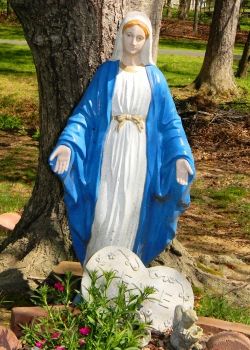
Statues and Medals
Catholics do not worship or pray to statues. Catholics do not believe that the statue is a god or that it possesses any divinity or virtue.
As with all religious statues, medals and paintings, Catholics keep them present as a visual reminder of their faith. There is a difference between the use of religious images and statues to remind us of our faith, and that of actual worship of images and statues. Catholics do not worship statues.
God does forbid the making and WORSHIP of any idol, but He does not forbid the religious use of statues. As a matter of fact, several places in the Bible, God commands his people to make statues.
For example, in Exodus 25:18-20, God commands Moses to instruct his people to make two cherubim of pure gold to place in the sanctuary He had commanded His people to build.
In Numbers 21:8-9, "The Lord said to Moses, 'Make a poisonous serpent, and set it on a pole; and everyone who is bitten shall look at it and live.' So Moses made a serpent of bronze, and put it upon a pole; and whenever a serpent bit someone, that person would look at the serpent of bronze and live."
I have included several links below that explain the use of religious images and statues.
Once God revealed Himself to us through the incarnation of Jesus Christ, Christians had a visible image of God. Therefore, statues were made in the likeness of God/Jesus/Holy Spirit (the Holy Trinity), Mary, Angels and saints as visible reminders.
If a parent or someone close to us has passed away, do we not keep their picture to help us remember them? Their picture is a visual reminder that helps us to more vividly remember our departed loved one.
Explaining Statues as Visual Reminders
- Catholic Doors
The Catholic Teachings of the Worship of Statues. "God did not forbid the religious usage of statues; He forbade the worship of statues."
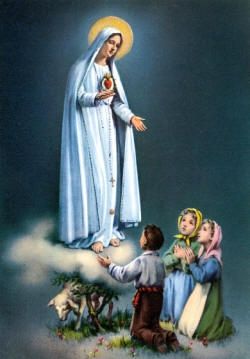
Our Lady of Fatima
"The Miracle of the Sun"
On May 13, 1917, the Blessed Virgin Mary appeared to three young peasant children in the Village of Fatima. The children were Lucia (age 10), and her cousins Francisco (age 9) and Jancita (age 7).
During that year of 1917, from May through October, the Blessed Mother appeared to the three children on the 13th day of each month. Each month, Our Lady brought another message to the children.
Our Lady insisted that people must turn from their sins, ask for forgiveness, and amend their lives. She had stated that man must no longer offend Our Lord. She requested increased prayer, devotion, and repentance from all people. She also reinforced the praying of the rosary.
There were many skeptics who believed the children were lying. Therefore, Our Lady promised a miracle on October 13, 1917, at midday, "so that all might believe. Approximately 80,000 people traveled to Fatima that day - some believers and some skeptics. What they experienced that day was "The Miracle of the Sun".
According to many witnesses, there had been a severe downfall of rain creating a field of mud. Suddenly, the rain stopped, the clouds broke and the sun appeared. The sun appeared as a disc in the sky. It danced in a zigzag pattern in the shy and cast multicolored lights across the landscape. Witnesses stated that the wet ground and their wet clothes dried completely. Many non-believers converted to Catholicism following the miracle. Although many still refused to believe and stated it was some sort of cosmic phenomenon. Even if it was, how was it that the children predicted exactly when it was to happen?
Francisco and Jancita died a few short years following the apparitions, just as Our Lady had foretold. Lucia became a nun of the Carmelite order when she was 18 years old. She had another apparition from Our Lady in 1929. Sister Lucia died on February 13, 2005 at the age of 97.
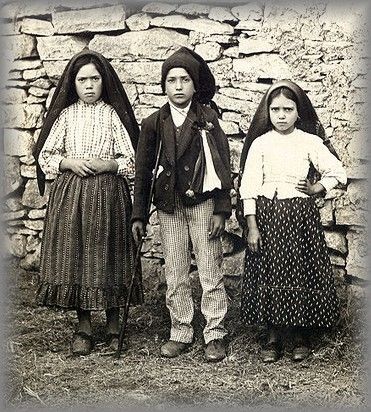
Lucia, Francisco and Jacinta.
Photos from Fatima from October 13,1917
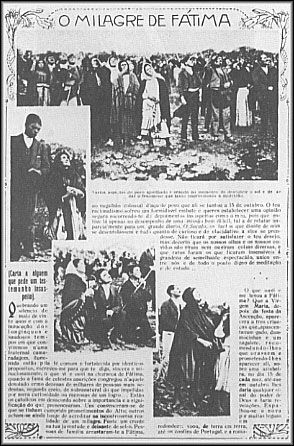
A photostatic copy of a page from Ilustracao Portugueza, October 29, 1917, showing the crowd looking at the Miracle of the Sun during the Fatima apparitions.
This is a file from the Wikimedia Commons.
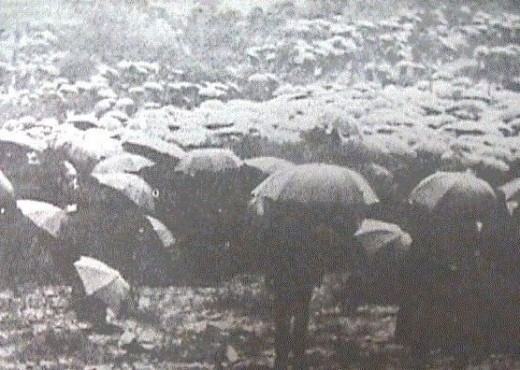
The downpour of rain.
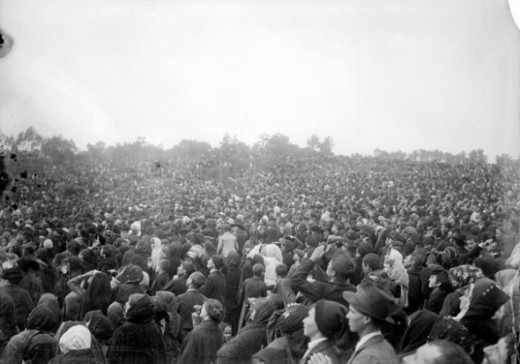
Photo of the crowd witnessing "The Miracle of the Sun".
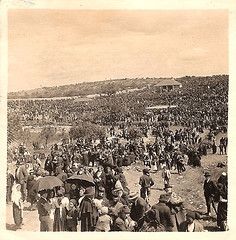
"The Miracle of the Sun" was witnessed by approximately 80,000 people.
Have you ever heard of the story of Fatima before?
Vision of Fatima
The following is an excerpt from the article on the "Rosary Center" link listed below:
Every sin, great and small, is an offense against God for which reparation must be made. Yet, so dear is the Heart of Mary to her Divine Son, and so much is He pained at the offenses and blasphemies against her Immaculate Heart that, as Fr. Thomas McGlynn, O.P. expresses in his book VISION OF FATIMA:
"God has told us now, through Fatima, that we can make reparation to Him if we repair the sufferings we have caused her. The Heart that received the fullness of participation in the divine life, that knew the affections of a mother for Jesus Christ during the years at Nazareth, that went through the agony of seeing Him die, that honors Him in heaven more than all the rest of creation, is now gloriously proclaimed by Him through Fatima."
Link List
- Medjugorjeusa.org
Pictures and information from Fatima. - Rosary Center
The message of Fatima - "Miracle of the Sun"
Witnesses' accounts of the visions they experienced at Fatima on October 13, 1917. - Our Lady of Fatima
A Sure Means of Salvation - The Apparitions of Our Lady of Fatima
Summary of the apparitions. - Our Lady of Fatima Plus: Her Promise of Protection with Her Protective Shield
"The eye-witness accounts of the Great "Miracle of the Sun", found below, give us some details as to what this Great "Miracle of the Sun" really was. But first, here is a summary of what made the Great "Miracle of the Sun" a genuine miracle." (excer

